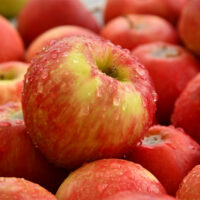Foods to avoid for managing multiple sclerosis

Multiple sclerosis (MS) is a progressive disease that affects the central nervous system. It results in the deterioration of myelin, a protective covering around the nerves, disrupting brain-body communication. Although there is no cure for MS yet, patients can manage the disease’s symptoms and discomforts with the help of lifestyle changes, medications, and targeted treatment. Moreover, a healthy nutrition plan is essential, and eliminating the following foods can help provide further relief.
Saturated and trans fat
Both saturated and trans fats are bad for MS. Saturated fats like coconut oil, palm oil, dairy fats, and meat fats can increase cholesterol levels. And since MS patients are at risk of cardiovascular problems, high cholesterol raises the risk of heart attack and stroke. Trans fats can have a similar effect and may trigger inflammation of blood vessels. These fats are mainly found in baked goods and confectionaries as they are made with hydrogenated vegetable oils and shortening.
Foods rich in sugar and salt
Research studies say that increased sodium levels in the body can lead to a relapse of MS symptoms. It also increases the risk of high blood pressure, leading to significant circulatory problems if left unchecked. On the other hand, sugar contributes to unhealthy weight gain, which can put a lot of strain on the heart and body. It can even lead to fatigue, one of the more common MS symptoms. Moreover, both sugar and salt are inflammatory foods and should hence be used in moderation.
Refined grains
Refined grains are stripped of all essential nutrients and minerals that the body requires for proper functioning, adding no nutritional value. Moreover, doctors recommend a high-fiber food regime for MS. So, whole grains are better substitutes for refined white rice, white pasta, white bread, etc. Fiber-rich foods help relieve the effects of constipation, one of the common symptoms among MS patients.
Since nutrition alone is not sufficient for managing MS, doctors may also prescribe the following:
PONVORY™ (ponesimod)
After extensive ponesimod clinical trials, the FDA has approved the use of PONVORY™ oral tablets for relapsing multiple sclerosis. The medication belongs to a class of disease-modifying therapies that prevents specific white blood cells from entering the brain and the spinal cord. Patients can use the PONVORY™ Rx coupons for ordering this prescription medication online at cheaper rates.
OCREVUS® (ocrelizumab)
An FDA-approved treatment option for MS is OCREVUS®— an infusion therapy also referred to as IV therapy. The therapy targets a type of immune cell called a CD20-positive B cell, which plays a role in the disease. OCREVUS® is used to treat relapsing or primary progressive forms of MS. It is given once every six months by healthcare professionals through intravenous infusion. Since OCREVUS® infusion involves premedication and post-infusion monitoring, each appointment may take up to seven hours.





